Abstract Expressionism revolutionized the art world in the mid-20th century through spontaneous gesture, large-scale canvases, and the intensely personal act of painting. Among its innovators, Grace Hartigan stands out for her ability to merge raw abstraction with subtle hints and narrative. Although her male peers have often dominated discussions of the movement, Hartigan’s work challenges conventional norms by integrating personal history and a distinctly feminine perspective.
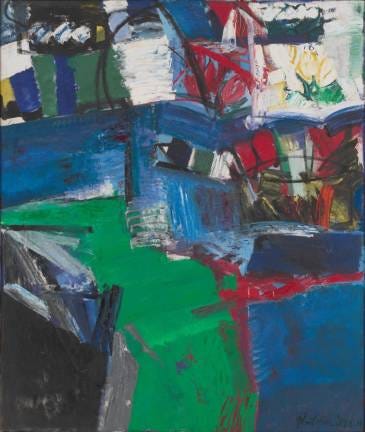
Born in 1922 in Newark, Grace Hartigan was raised in a culturally rich environment that fostered creative experimentation. She studied at the Art Students League, where she absorbed classical techniques even as modernist abstraction began to take root. Influenced early on by the energetic brushstrokes of Willem de Kooning and the gestural dynamism of Jackson Pollock, Hartigan soon developed her own style by incorporating subtle figurative elements and personal narratives; a departure from the purely spontaneous approaches of some of her contemporaries (“Grace Hartigan,” Wikipedia; “Grace Hartigan,” The Art Story).
During the 1950s, Hartigan’s participation in influential exhibitions and group shows helped her gain recognition, even as she faced challenges in a male-dominated field. By the 1960s and 1970s, her style evolved further as she balanced vigorous brushwork with delicate, layered compositions. Her art reflects a continuous negotiation between public expression and personal introspection, mirroring the social and cultural shifts of postwar America. Additional biographical details are corroborated by sources such as Encyclopaedia Britannica and a New York Times obituary, which emphasize her perseverance and innovative spirit (“Grace Hartigan,” Britannica; “Grace Hartigan, Painter of Modern Life, Dies at 86,” The New York Times).
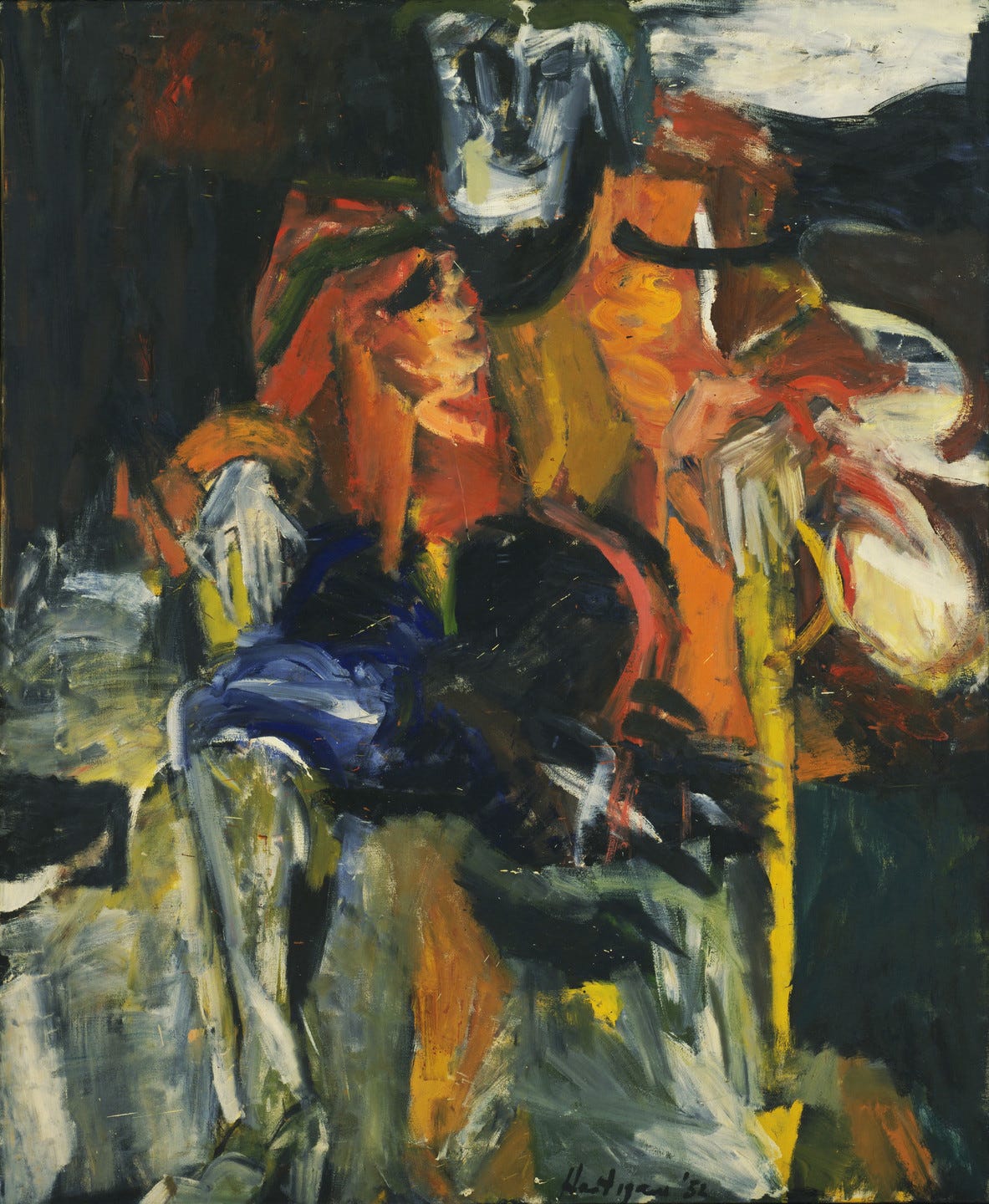
Hartigan’s paintings are renowned for their vigorous brushstrokes, bold color palettes, and a dynamic interplay between abstraction and figurative detail. Her process combined intuitive gesture with meticulous compositional planning. In many works, broad swathes of color and energetic forms are balanced by subtle, almost hidden figures that hint at human experience and emotion. This duality allowed her to capture both the chaos and intimacy of modern life.
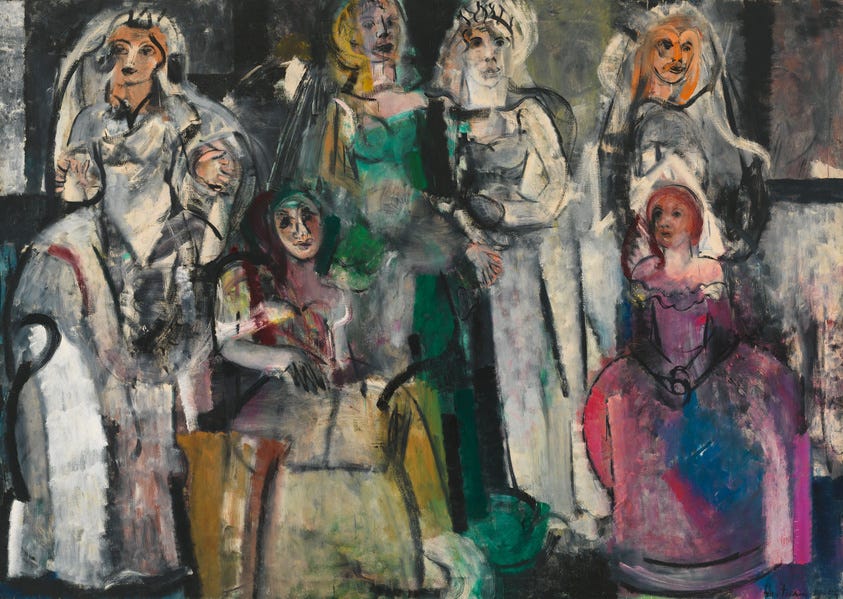
Her technique of layering paint to create depth has been described as both “sculptural” and “impassioned” (Sandler). Unlike some Abstract Expressionists who favored pure gesture, Hartigan’s incorporation of controlled, delicate elements invites the viewer to search for meaning. Furthermore, her innovative use of bold hues not only evokes emotion but also defines spatial relationships within her canvases. Her later works, which showcase an interplay of warm and cool tones, reflect both her early figurative training and her evolving abstract sensibility.
Hartigan’s work must be understood within the broader context of Abstract Expressionism; a movement born from the existential uncertainty of postwar America. Emerging in the 1940s and 1950s, the movement emphasized individual expression and the process of creation. While many of her contemporaries embraced unbridled spontaneity, Hartigan’s integration of figuration and personal narrative provided a counterpoint that enriched the movement’s discourse (Goldwater; Sandler).
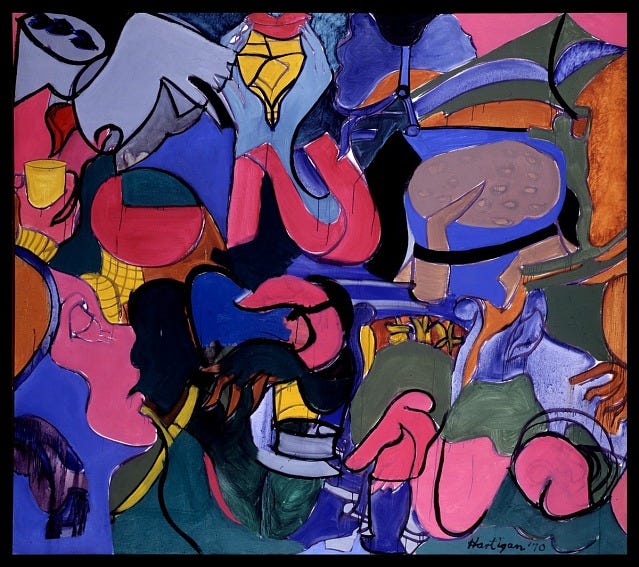
Her work also intersected with broader cultural debates about gender, identity, and the role of art in society. Feminist art historians have argued that by incorporating a distinct personal and feminine touch, Hartigan challenged the prevailing norms of Abstract Expressionism and paved the way for later generations of women artists (Nochlin 210–224). Additionally, her paintings capture the political and social tensions of the postwar era, serving as visual diaries of a time defined by rapid change and uncertainty.

Initially, Hartigan’s contributions were overshadowed by those of her male counterparts, but subsequent critical reassessment has positioned her as a vital figure in Abstract Expressionism. Major institutions like the Museum of Modern Art (MoMA) and the Whitney Museum have included her works in their permanent collections, and retrospectives of her art have been held internationally. Influential essays by Linda Nochlin have been pivotal in highlighting her unique contributions to the New York School. Contemporary critics now celebrate her dynamic blend of abstraction and figuration, recognizing her lasting impact on modern art (Nochlin; “Grace Hartigan, Painter of Modern Life, Dies at 86,” The New York Times).
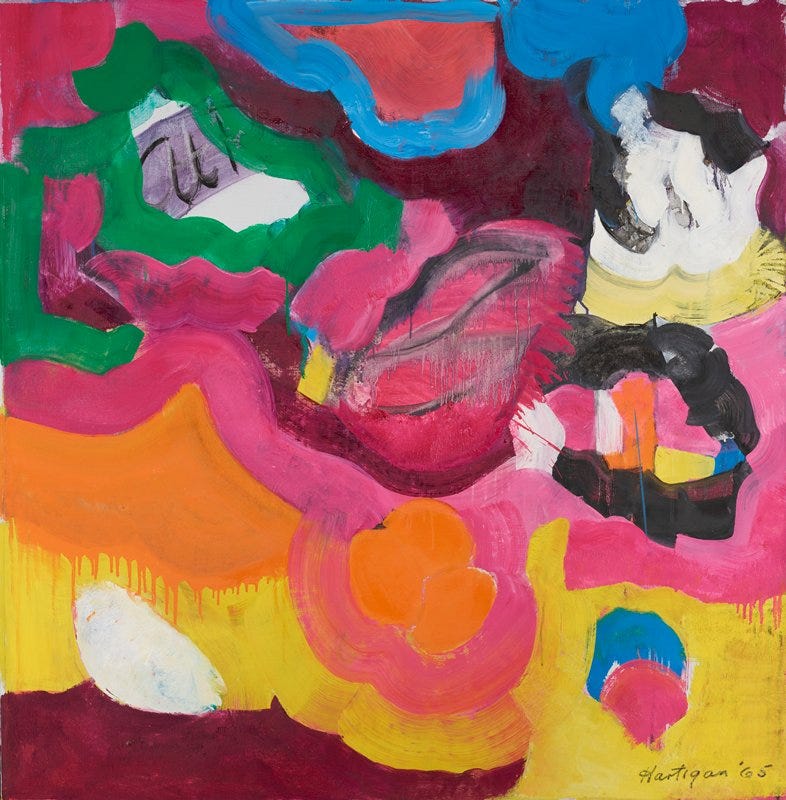
Her legacy endures not only through her influential body of work but also as a trailblazer who challenged gender biases within the art world. Hartigan’s dynamic paintings continue to inspire emerging artists and scholars, reinforcing her role in shaping the evolution of Abstract Expressionism and modern art as a whole.
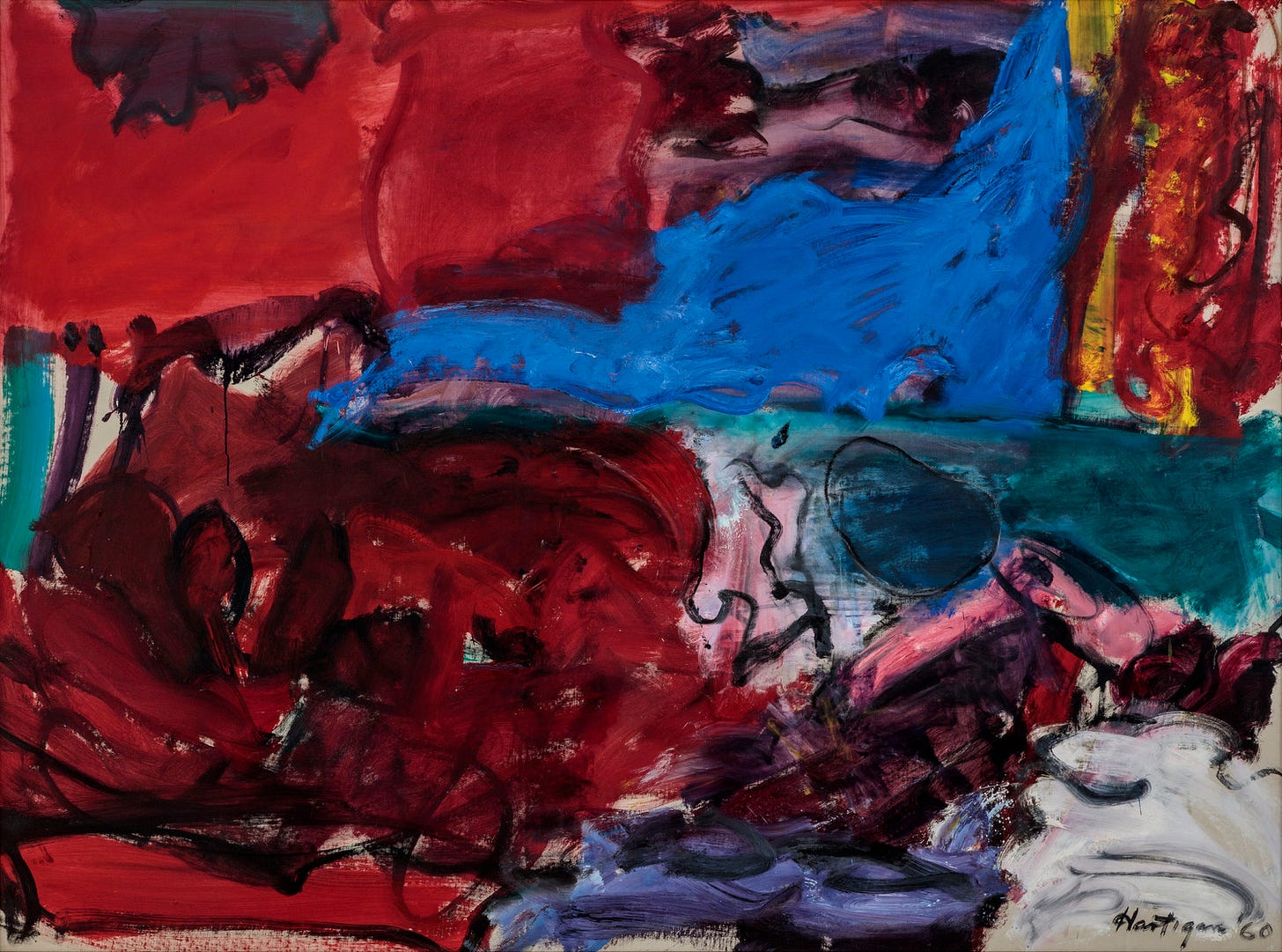
Grace Hartigan’s career encapsulates the passionate, multifaceted spirit of Abstract Expressionism. Her innovative blending of vigorous abstraction with nuanced figuration redefined modern painting and offered a powerful, personal voice within a dominant movement. Her work, rich with emotion, technical innovation, and historical context, remains a testament to the transformative power of art in postwar America. As we continue to explore and reinterpret the evolution of modern art, Hartigan’s legacy stands as a vital reminder of the importance of personal expression, resilience, and the courage to defy convention.
References:
Grace Hartigan. Wikipedia, Wikimedia Foundation, https://en.wikipedia.org/wiki/Grace_Hartigan. Accessed 17 Jan. 2025.
Grace Hartigan. The Art Story, www.theartstory.org/artist/hartigan-grace/. Accessed 17 Jan. 2025.
Grace Hartigan. MoMA, Museum of Modern Art, www.moma.org/artists/2489. Accessed 17 Jan. 2025.
Grace Hartigan. Britannica, Encyclopaedia Britannica, https://www.britannica.com/biography/Grace-Hartigan. Accessed 17 Jan. 2025.
Goldwater, Robert. American Abstract Expressionism. Yale University Press, 1967.
Nochlin, Linda. Women Artists and the New York School. Art Journal, vol. 42, no. 3, 1983, pp. 210–224.
Sandler, Irving. The Triumph of American Painting: A History of Abstract Expressionism. Harper & Row, 1970.
Grace Hartigan, Painter of Modern Life, Dies at 86. The New York Times, 29 Oct. 2008, www.nytimes.com/2008/10/30/arts/design/30hartigan.html. Accessed 17 Jan. 2025.




Well put together piece with a terrific array of her work. She went to school to be an engineer before dedicating herself to her art, which shows in how she organizes her space on canvas. She also was extremely intelligent, in general. Her palette was ahead of her time with use of strong pinks.
This is one artist I would have loved to be in her studio to see how she approached her work, given the intellect behind it.
My first career was in software engineering. Maybe that's why I responded so strongly to these paintings 😁